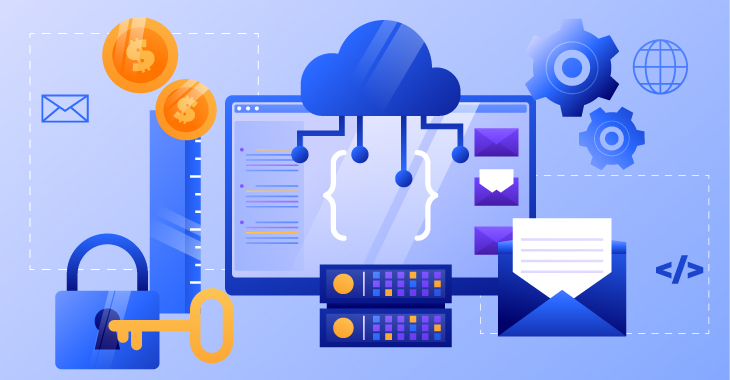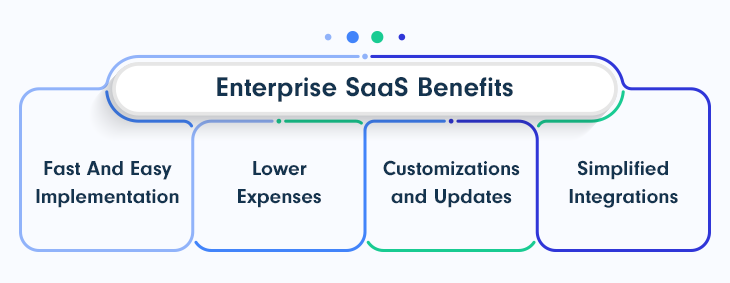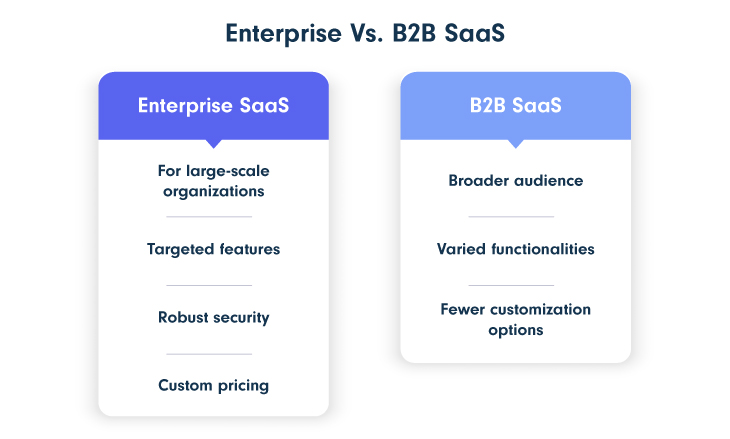What is Enterprise SaaS? + Examples
We live in the technology era. And if you think about it, we have for quite some time now.
Remaining competitive within the industry and constantly meeting customer needs makes businesses highly dependent on software.
But the question is, what kind of software provides businesses with the highest operational efficiency and lowest resource requirements?
SaaS solutions are, without a doubt, the answer to this question.
With the enterprise market seeing increased growth and the SaaS software industry valued at $237.48 in 2022, it makes perfect sense to plunge into these industry developments.
However, before you do, join us in taking a deep dive into enterprise SaaS solutions, as we look at:
- What is Enterprise SaaS?
- 4 SaaS Benefits For Entreprises
- Enterprise Vs. B2B SaaS
- 3 Enterprise SaaS Examples
- How To Price Your Enterprise SaaS
- 3 Enterprise SaaS Selling Tips
- 4 Essential Enterprise SaaS Metrics
- How Can PayPro Global Help?

What is Enterprise SaaS?
Enterprise SaaS solutions are cloud-based applications developed specifically for large-scale organizations with complex technological needs, thousands of employees, and multiple locations around the world.
Because of their large size, enterprise businesses require dynamic technology to conveniently sustain an increased number of complicated operations. This could mean anything from streamlining supply chains to managing financial data.
4 SaaS Benefits For Entreprises
With the impressive boom in eCommerce, SaaS software has skyrocketed in popularity, becoming the go-to choice for businesses of all kinds and, notably, a top favorite among large enterprise companies. And here’s why.

1. Fast And Easy Implementation
Unlike traditional enterprise software, where the implementation process can take months, requiring extensive involvement from IT teams, SaaS solutions can be deployed in minutes. Yes, minutes!
Moreover, the training and onboarding processes are streamlined and focused on quickly delivering value and getting users accustomed to the product.
2. Lower Expenses
An enterprise level solution usually involves a costly upfront investment due to significant maintenance, software licensing, and customization costs.
On the other hand, SaaS pricing comes in the form of monthly and annual subscription plans, offering users access to only the services they use on a regular basis. Without upfront investments in software maintenance or hardware, the organization can redirect resources to other needs.
3. Customizations and Updates
Up until recently, traditional enterprise software had the competitive advantage of providing organizations with customized solutions to fit specific needs. This has changed, as SaaS providers now offer this option as well, alongside other impressive advantages.
Due to its open web-based architecture, enterprise SaaS solutions can also be easily modified according to specific requirements.
And unlike traditional software, SaaS companies can effortlessly update their solutions, rolling out new features on a regular basis, thus ensuring that clients are given access to the latest technology.
4. Simplified Integrations
Traditional enterprise software justifies its increased costs through its complex infrastructure, meant to solve a wide range of tasks. However, a complicated system architecture generally speaking, requires extensive maintenance.
That’s where SaaS wins again.
Enterprise level SaaS apps, while simple in their architecture, have streamlined integration processes, which enable users to successfully carry out a significant number of tasks.
This, of course, leads to increased efficiency and productivity, which is obviously attractive to every business out there.
Enterprise Vs. B2B SaaS
These two concepts might be often confused, but in reality, apart from both being cloud-based software, they are very different. Let’s understand what sets them apart.

The Enterprise SaaS Solution
They are primarily aimed at large-scale companies and corporations.
They typically have many features developed to sustain complex business processes.
They often include robust security characteristics, extensive customization capabilities, and simplified integrations with third party tools.
They are priced according to the features and the level of scalability offered.
B2B SaaS
These solutions have a broader target market, being fit for both small and medium-sized companies, as well as large-scale organizations.
B2B SaaS applications, while aimed at improving operational efficiency, offer a more diversified set of features instead of promoting a targeted approach.
Unlike enterprise SaaS offerings, these systems have fewer customization options.
Read on to discover 3 enterprise SaaS examples on PayPro Global's Blog.
